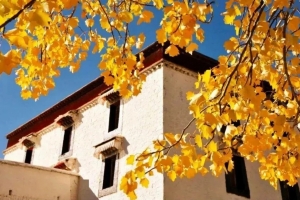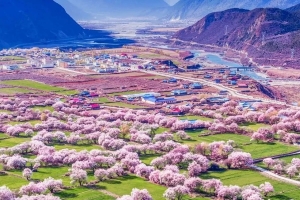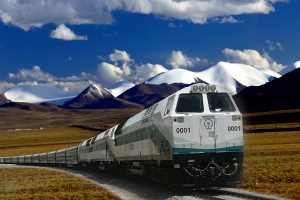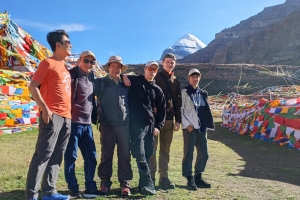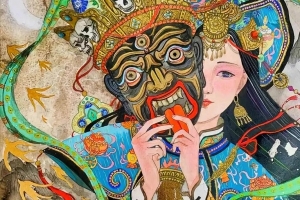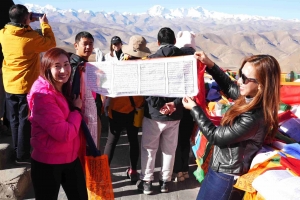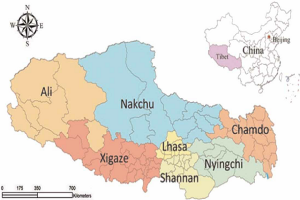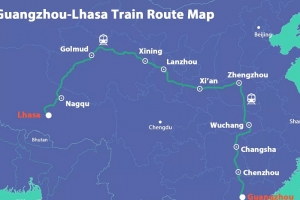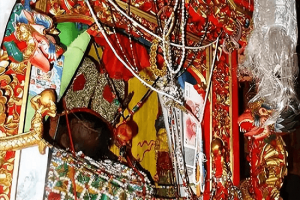For travelers coming to Tibet for the first time, the Qinghai–Tibet Railway is often irresistible. Over nearly 2,000 kilometers the train becomes a moving window into landscapes that shift dramatically: salt flats that stretch to the horizon, sapphire lakes, snow-draped peaks, windswept plateaus, and pockets of pastoral life where yaks graze and nomads tend their flocks. Compared with flying, the train offers a slow, scenic approach that gives your body time to acclimatize to high altitude — and it turns transportation into the highlight of the trip itself.
That said, not all days, trains, or seasons reveal the railway at its best. Weather, daylight hours, and scheduling all shape what you can see. This guide helps you choose the season and specific train times that will maximize the visual and cultural rewards of your journey — and explains how Journey2tibet can simplify ticketing and logistics for international guests.
Best times to take Qinghai–Tibet Train – Seasonal travel tips
- Top scenic season: Summer (July–September) — lusher grasslands, vibrant lake colors, and long daylight hours.
- Best balance of weather and light: Early autumn (September–early October) — clear skies and crisp air, ideal for photography.
- Quiet, dramatic option: Winter (November–March) — epic snow scenes, fewer visitors, easier ticket availability.
- Spring (March–May): a transitional, less crowded time when melting snow meets fresh green, but conditions can be variable.
If your priority is scenery, especially the famous stretch between Golmud and Lhasa, aim to be on a train that travels that segment during daylight.
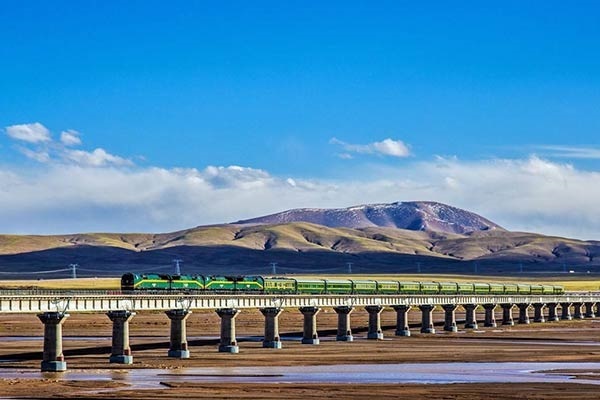
Qinghai–Tibet Train
Spring (March–May)
Spring is a season of thaw and change. Higher elevations shed winter snow, rivers swell, and patches of green begin to appear across the plateau. For travelers who prefer quieter routes and softer lighting, spring is appealing. However, weather remains unpredictable in early spring, and some roads or services can still be affected by late snow.
Practical advice: pack layers (temperatures vary sharply), sunglasses and sun protection (high-altitude UV is strong), and be prepared for occasional wind and dust.
Summer (July–September) — the classic choice
Summer is the most popular and arguably the most visually rewarding season. Alpine meadows and plains go green, lakes like Qinghai Lake show deep saturated hues, and wildflowers dot the landscape. Long daylight hours enable more of the Golmud–Lhasa stretch to be seen in full sunlight. Summer is also the most comfortable in terms of temperature.
Watchouts: this is peak travel season. Demand for sleeping berths and popular trains is high; prices and occupancy rise. Afternoon thunderstorms are possible, so bring a light rain layer. If photography is your goal, arrive prepared for quickly changing skies.
Autumn (September–early November) — clear air, intense color
Early autumn delivers some of the clearest skies and best long-distance visibility of the year. Colors are crisp, sunlight is strong, and crowds are generally thinning after the August peak. Late September to mid-October is especially popular with photographers chasing that clear, high-contrast look.
Practical advice: book early if you aim for the early-autumn sweet spot; by late October, temperatures fall and some services begin to wind down.
Winter (November–March) — quiet and cinematic
Winter turns the plateau into a monochrome panorama: frozen lakes, frosted peaks, and barren beauty. Because fewer tourists travel in winter, tickets are generally easier to secure, and accommodations can be less crowded. The cold is significant, so plan for low temperatures and shorter daylight.
Health tip: cold weather increases the strain on the body. Warm clothing and a well-insulated sleeping bag for overnights off the train can be helpful. The trains themselves have heating, but station waits and transfers require good winter gear.
Why the Golmud–Lhasa stretch matters
The most breathtaking views on the Qinghai–Tibet Railway are concentrated on the section west of Golmud toward Lhasa. This stretch traverses major plateaus, nature reserves like Hoh Xil (the former “Kekexili”), the Kunlun and Nyenchen Tanglha ranges, expansive grasslands, and river valleys such as the upper reaches of the Yarlung Tsangpo (Brahmaputra). If you travel through this corridor at night, all of that visual drama passes unseen.
Practical tip: when booking, check the train’s timetable for the time the service passes Golmud and whether that time is during daylight. Prioritize trains that keep you awake through the prime window — they turn your window seat into a front-row viewpoint.
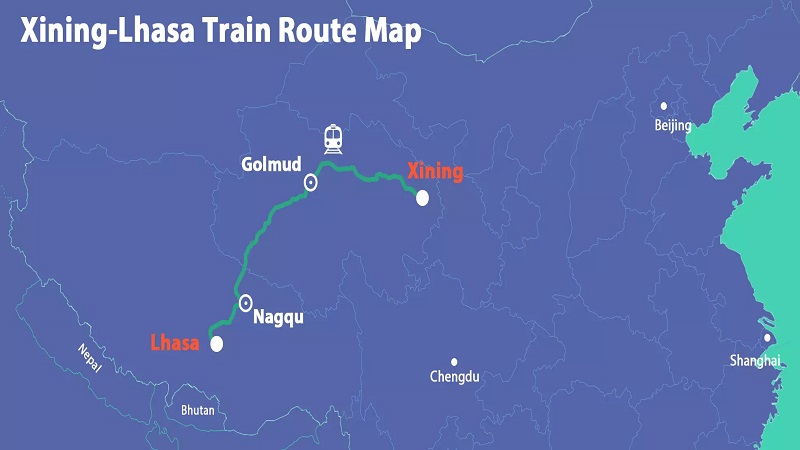
Xining To Lhasa Train
Which train should you choose? Daytime vs nighttime and berth choices
Trains on the Qinghai–Tibet route are a mix of day and night services. If your priority is sightseeing, choose a service that is scheduled to pass the Golmud–Lhasa section during daytime. If you prefer to conserve daytime for activities in Lhasa itself and don’t mind missing the corridor’s panoramas, night trains let you sleep through more of the journey.
Berth recommendations:
- Soft sleeper (if available): more comfortable for multi-day journeys and better for rest.
- Lower bunk: easier access and usually better for daytime viewing if occupied by you.
- Window seats (for seated coaches): choose the seat on the side facing the main window views — ask your agent which side is best when booking.
Journey2tibet can advise on specific services and help choose the train/berth combination that matches your priorities.
Booking strategies — how to get the seats you want
- Book early: For summer and holiday windows, tickets sell quickly.
- Be flexible on departure city: If your preferred origin (e.g., your home city) has no available seats, flying into an intermediate hub such as Xining gives you more train options.
- Use a trusted agent: Ticketing can be tricky for international guests unfamiliar with Chinese rail booking systems. Journey2tibet offers ticket purchase and itinerary coordination to ensure you get the train and schedule you want.
- Track cancellations / re-releases: People return tickets; sensibly monitoring available tickets in the weeks before departure can pay off. Agents can help with standby strategies and automated checks.
- Consider combined options: Sometimes combining a short flight with a scenic train segment (for example, fly to Xining, train to Lhasa) gives the best balance of convenience and views.
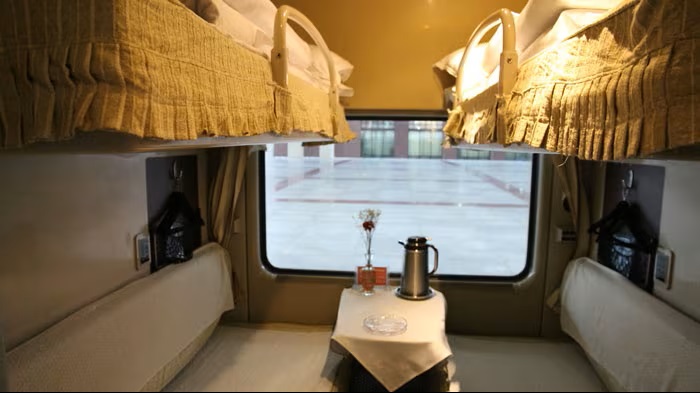
Soft sleeper on the Qinghai-Tibet Railway
Onboard and arrival practicalities
Health and altitude adaptation
- The Qinghai–Tibet Railway helps your body acclimatize gradually, but mild altitude symptoms (headache, shortness of breath, insomnia) still appear for some travelers. Hydrate, eat light, avoid alcohol, and rest.
- Bring preventive medication and a small portable oxygen canister if you are concerned. Travelers with serious cardiovascular or respiratory conditions should consult a physician before travel.
- Plan a relaxed first 48–72 hours in Lhasa to adapt before strenuous activities.
Photography and visual tips
- Best light: morning and late afternoon offer the most dramatic shadows and color gradation.
- Reduce reflections: glass reflections can interfere with shots; press your camera or hands close to the window to limit glare. Black cloth or a dark jacket placed close to the glass helps.
- Equipment: wide-angle lenses capture sweeping landscapes; a mid-telephoto is useful for distant wildlife. Cold drains batteries faster — carry spares in an inner pocket to keep them warm.
Respectful travel
- Tibet is both culturally rich and spiritually sensitive. Ask permission before photographing people, especially in religious contexts. Follow local rules at monasteries and sacred sites — quiet tones, modest dress, and respectful behavior are expected.
Quick Qinghai–Tibet Train FAQ for international travelers
Q: Do I need a permit to travel to Tibet by train?
A: Most foreign visitors require a Tibet Travel Permit to enter Tibet. Your travel agent (like Journey2tibet) will arrange the necessary paperwork and coordinate with train bookings.
Q: Is it safe for families and older travelers?
A: Yes — many families and older travelers ride the Qinghai–Tibet Railway successfully every year. Choose milder seasons, book comfortable berths, and allow time for acclimatization.
Q: What if I get altitude sickness on the train?
A: Symptoms are usually mild but should be taken seriously. Speak with train staff; oxygen and basic first-aid are available on many services. Disembarkation and medical attention are arranged when required.
Q: How long is the journey from Xining to Lhasa?
A: Depending on the service, the direct train takes roughly 20–24 hours. Exact durations vary by train number and schedule.
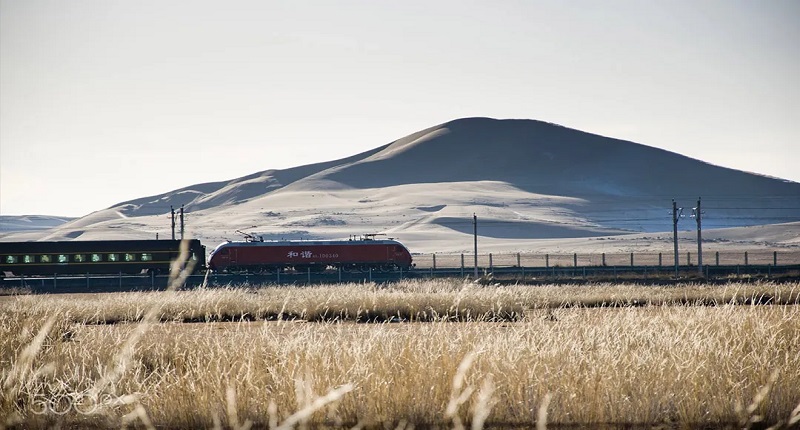
Qinghai-Tibet Railway
Choose the season and train that match your tours
The Qinghai–Tibet train is more than transit: it’s a moving panorama of one of the most remote and dramatic regions on Earth. If your priority is immersive scenery, target summer or early autumn and make sure the Golmud–Lhasa stretch falls in daylight on your chosen train. If you prefer solitude and snowy vistas, consider winter. Wherever you land, thoughtful planning—on tickets, timing, health measures, and camera gear—will make the trip unforgettable.
If you want hands-on help with timing, train selection, permits, or full itinerary planning, Journey2tibet is ready to assist. We provide bilingual support, can secure daytime Golmud–Lhasa train options, handle Tibet Travel Permits, and craft customizable itineraries so you can relax and enjoy the view.

